Five Ten Quantum VS Five Ten Verdon Lace – Which Climbing Shoe Is Right For You?
You may not have noticed it, but there is a new trend sweeping the climbing shoe market – high-end performance-oriented shoes with relatively stiff midsoles.
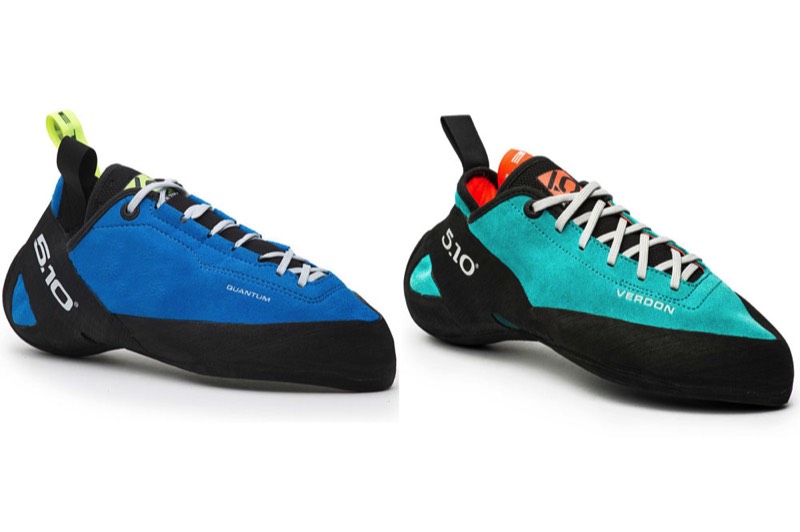
Five Ten Quantum and the Five Ten Verdon Lace
In the recent past, stiffer climbing shoes were relegated to the traditional crack climbing/multi-pitch route market while climbers looking to send more difficult routes and boulder problems gravitated to more sensitive shoes. This division made sense as many of the stiffer shoes lacked the sophisticated lasting and tensioning of softer models. Sure, these stiff shoes were fine for paddling up easy 5.5 and removing the texture from plastic climbing holds, but they were often too clunky for serious climbing (offwidth and chimney squirming being the exceptions). So what changed? Well, climbing shoe companies started applying some of the lasting and tensioning tricks they had picked up from their softer offerings to help improve the performance of stiffer shoes. They also realized that most folks might not live near steep cave-like climbing (where softer shoes tend to shine) and instead spend most of their time on vertical to gently overhanging terrain which is ideal for stiffer more supportive shoes. Finally, the growing number of new climbers entering the sport, who have learned to climb on flat-lasted and comfortably-sized climbing shoes, may be reticent to transition to the much tighter fit required by many softer shoe models.
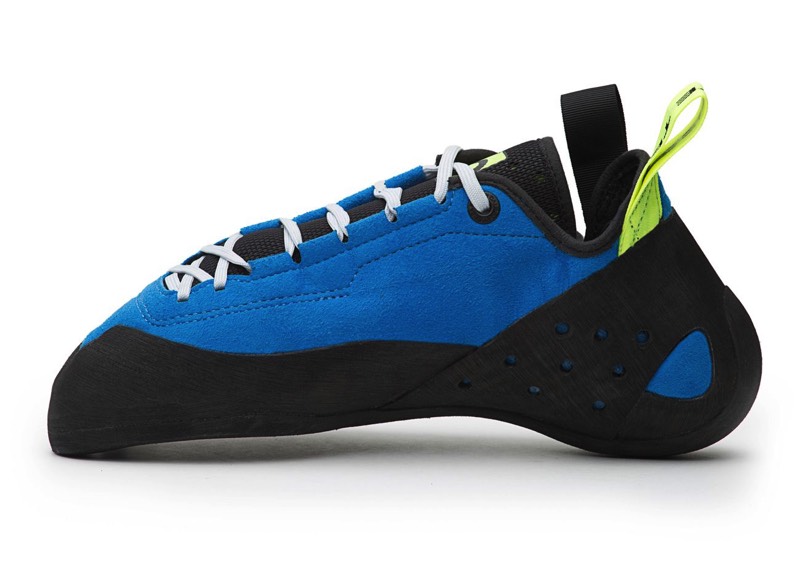
Five Ten Quantum
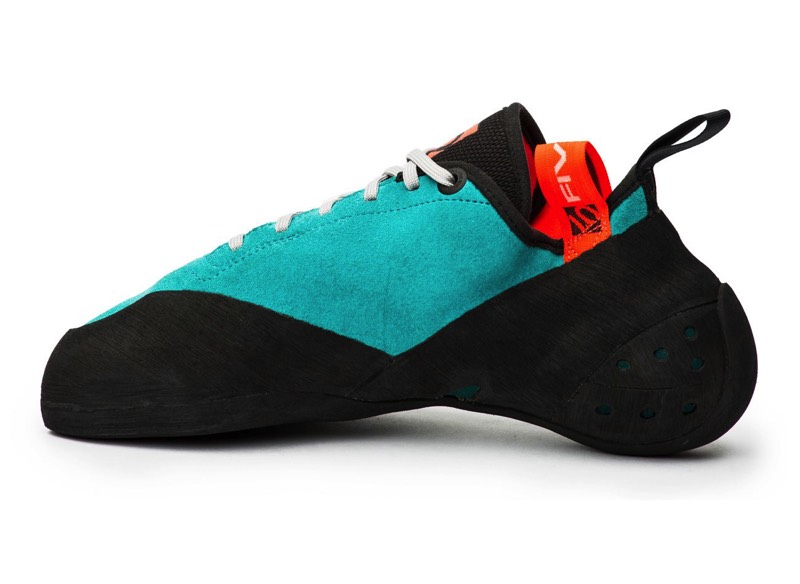
Five Ten Verdon Lace
Which brings us to Five Ten’s new Quantum and Verdon Lace. These two models epitomize the new slightly stiffer performance-shoe trend. And while on the surface the shoes look very similar (and offer some crossover performance), they excel in slightly different climbing situations.
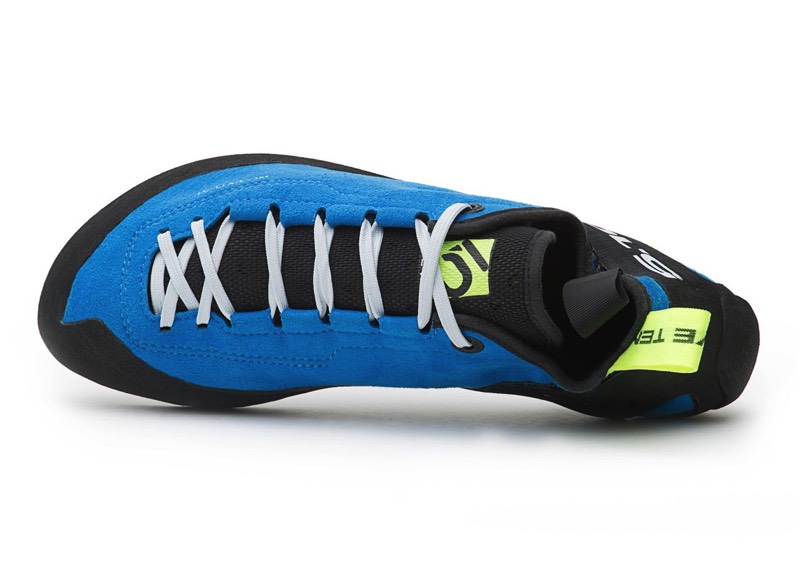
Five Ten Quantum
Five Ten slots the Quantum in its Aggressive shoe category and as such it sports the mandatory downturn last that is common for these types of shoes. But thanks to that more supportive midsole the downturn is less extreme. The result is a more comfortable fit while still providing the power and precision required on steeper routes. Speaking of comfort, the Quantum also features a new last with a better fitting heel and a slightly wider forefoot that focuses the power over the big toe. Having climbed in these shoes for a few months, I love the new fit and hope Five Ten employs this last on other models. Other details worth noting include the plush perforated Ariaprene tongue and a Clarino lined synthetic upper. The tongue reduces lace pressure and provides excellent ventilation while the lined upper ensures consistent fit throughout the life of the shoe. Five Ten has also updated the lacing by adding a slick speed lacing system and moving the eyelets further towards the toes for more control. As for the rubber, Five Ten specs Stealth C4, which offers excellent edging and smearing over a wide range of temperatures.
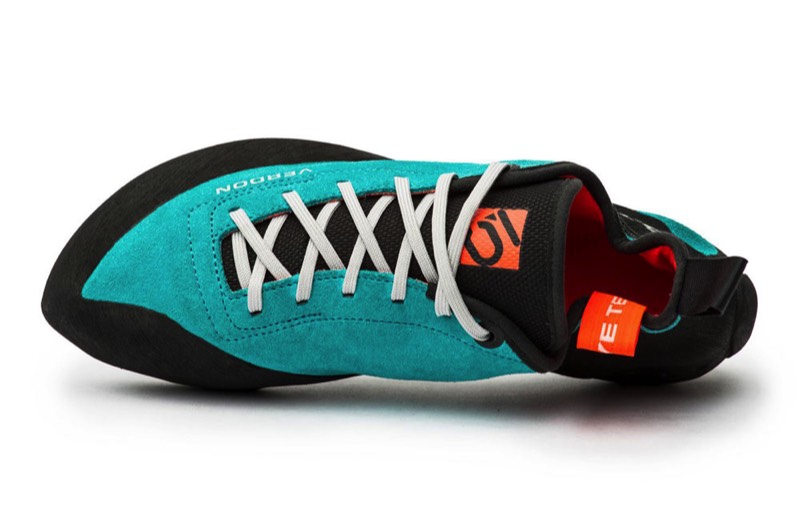
Five Ten Verdon Lace
Moving over to the Verdon Lace, we notice some similar features. The shoe uses the same sticky Stealth C4 rubber, has a new last and a similarly stiff midsole. But unlike the Quantum, the Verdon Lace sits in Five Ten’s Moderate shoe category and therefore offers a less aggressive downturned shape and slightly less tension in the heel. These differences make the Verdon Lace supremely suitable for small hold climbing on vertical terrain while remaining comfortable enough for longer routes. As I mentioned earlier, the Verdon Lace features a new asymmetric last that offers a little more room in the forefoot and focuses power over the big toe. The toe shape is surprisingly pointy, making the Verdon Lace ideal for the small pockets encountered in the Verdon (hence the name) as well as on many of the classic sport routes found on Ontario limestone. At this point it’s also worth noting that Five Ten has added a formed foam layer over the midsole. This helps minimize any dead space under the foot, as sometimes occurs with stiffer flatter-lasted shoes. For the upper, Five Ten uses a Clarino lined leather that allows for some stretch (up to half a size) for a better fit without risking the larger size changes that can happen with unlined shoes.
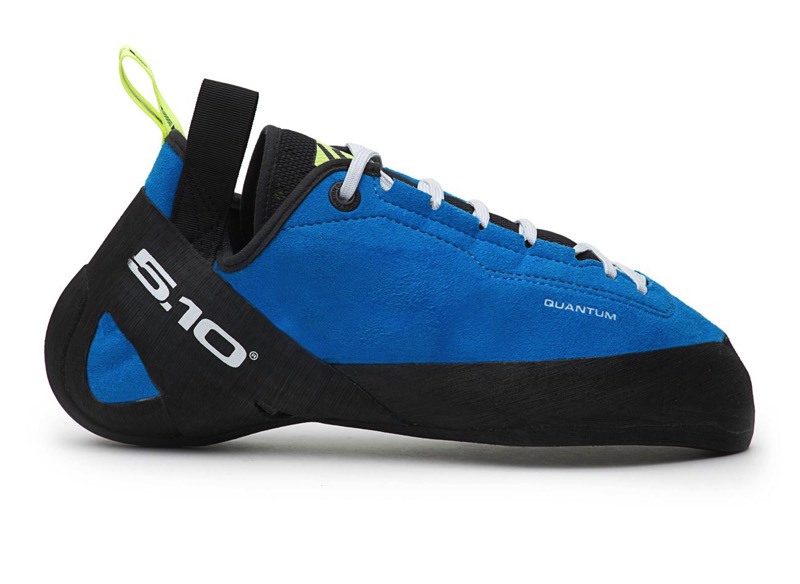
Five Ten Quantum
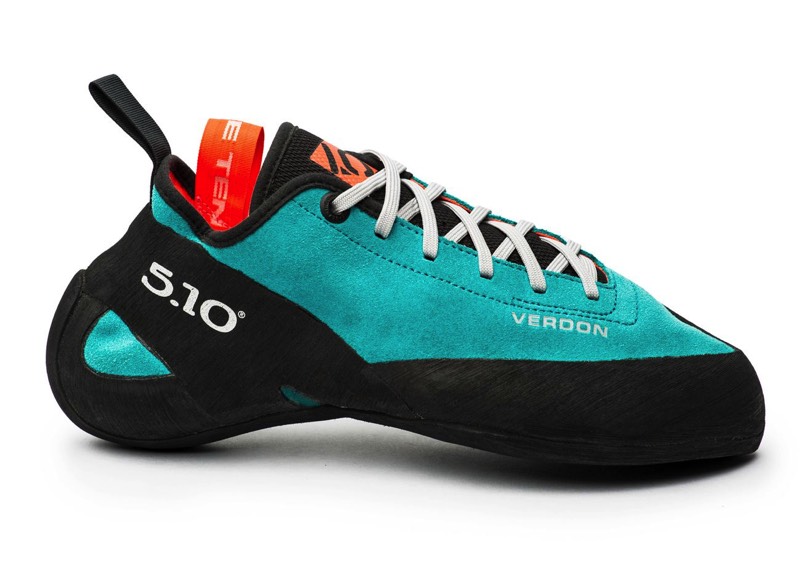
Five Ten Verdon Lace
So which is the better shoe? Well, that depends on what you’re climbing. If you want a pure performance shoe that excels on small holds, plastic and overhanging terrain, consider the Quantum. It can cruise difficult routes as well as easily handle less than super-steep bouldering. It’s also a surprisingly capable crack climbing shoe. On the other hand, if you spend most of your time on vertical terrain that’s littered with small pockets and dimples (southern Ontario limestone?) or are looking to do longer multi-pitch climbs, then the Verdon Lace will be your go-to option. Its flatter last is more comfortable, and the pointier toe profile is better suited for small pockets. It’s also a top-notch crack climbing shoe, something that savvy climbers may have suspected if they noticed the larger swatch of forefoot and heel rubber on the medial side of the shoe.
Ultimately, climbers can’t go wrong with either shoe. While the Quantum and Verdon Lace are optimized for slightly different climbing situations, they both offer exceptional performance, versatility and comfort. Chose the one that best suits your needs and start climbing.
Ultimately, climbers can’t go wrong with either shoe. While the Quantum and Verdon Lace are optimized for slightly different climbing situations, they both offer exceptional performance, versatility and comfort. Chose the one that best suits your needs and start climbing.
You can find out more about the new Five Ten Quantum, Five Ten Verdon Lace and other Five Ten climbing gear at http://www.fiveten.com/


